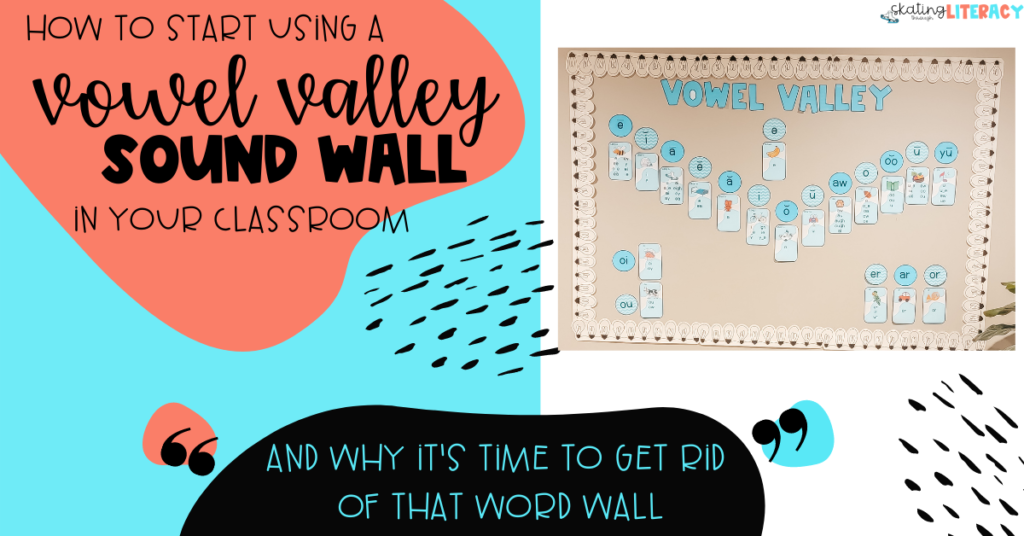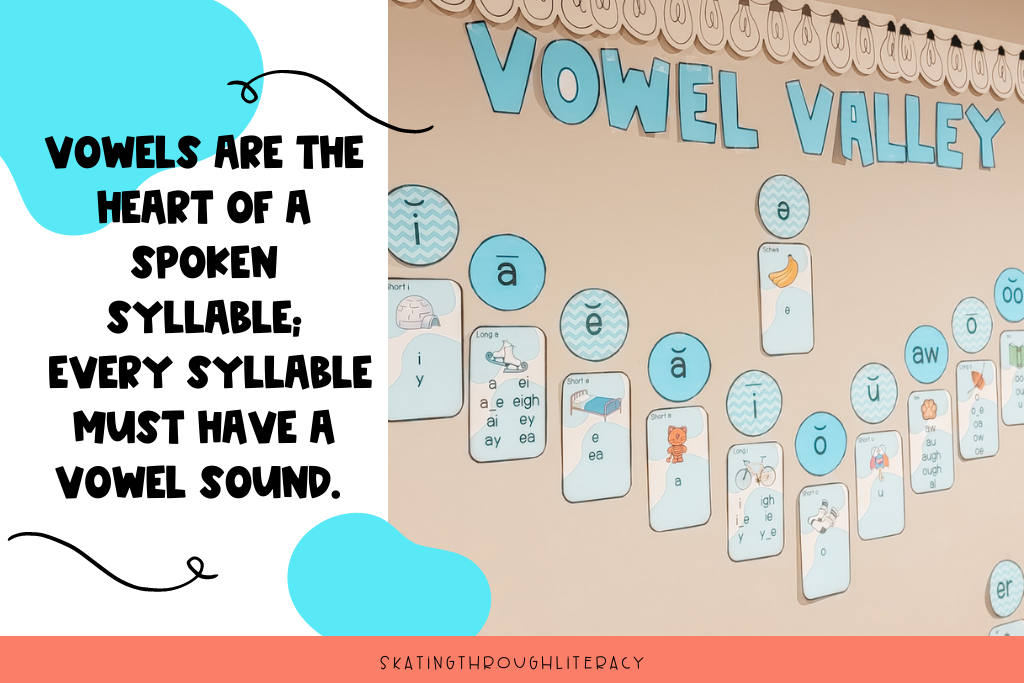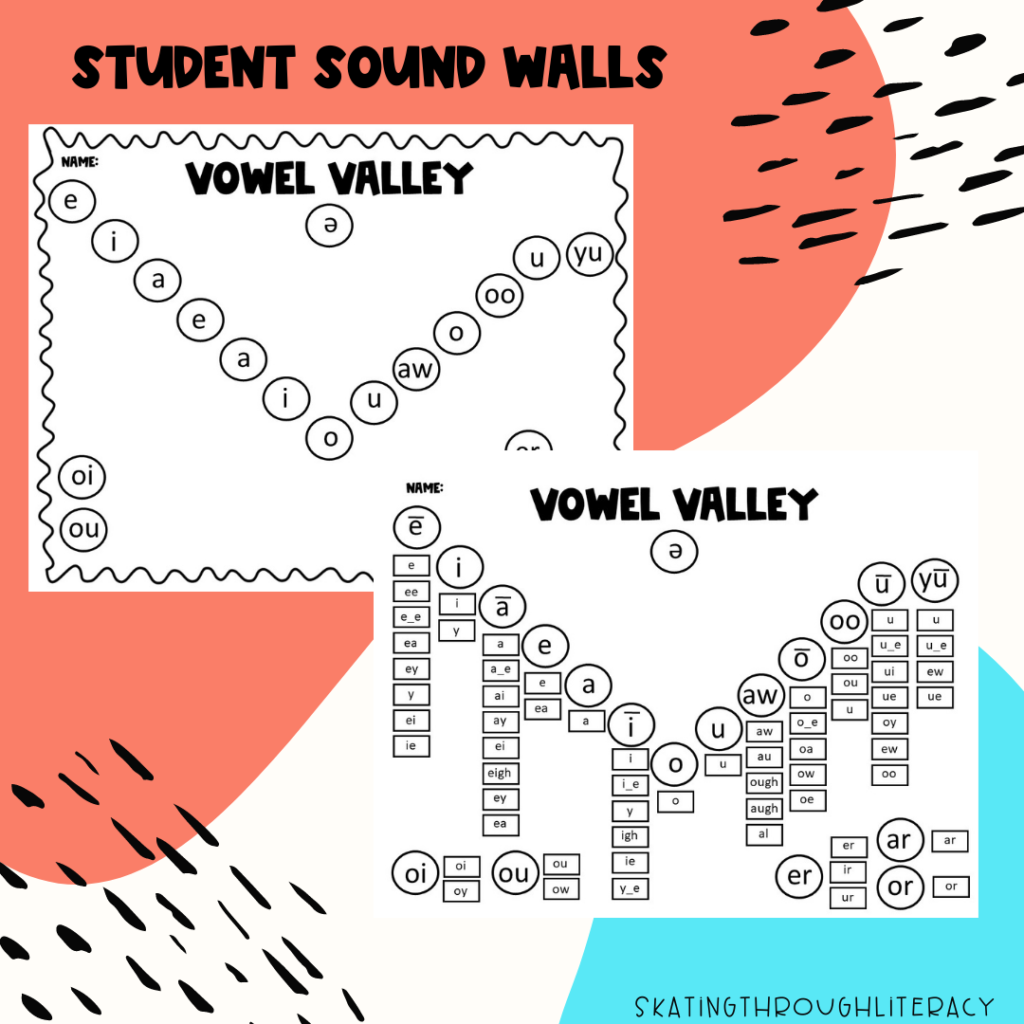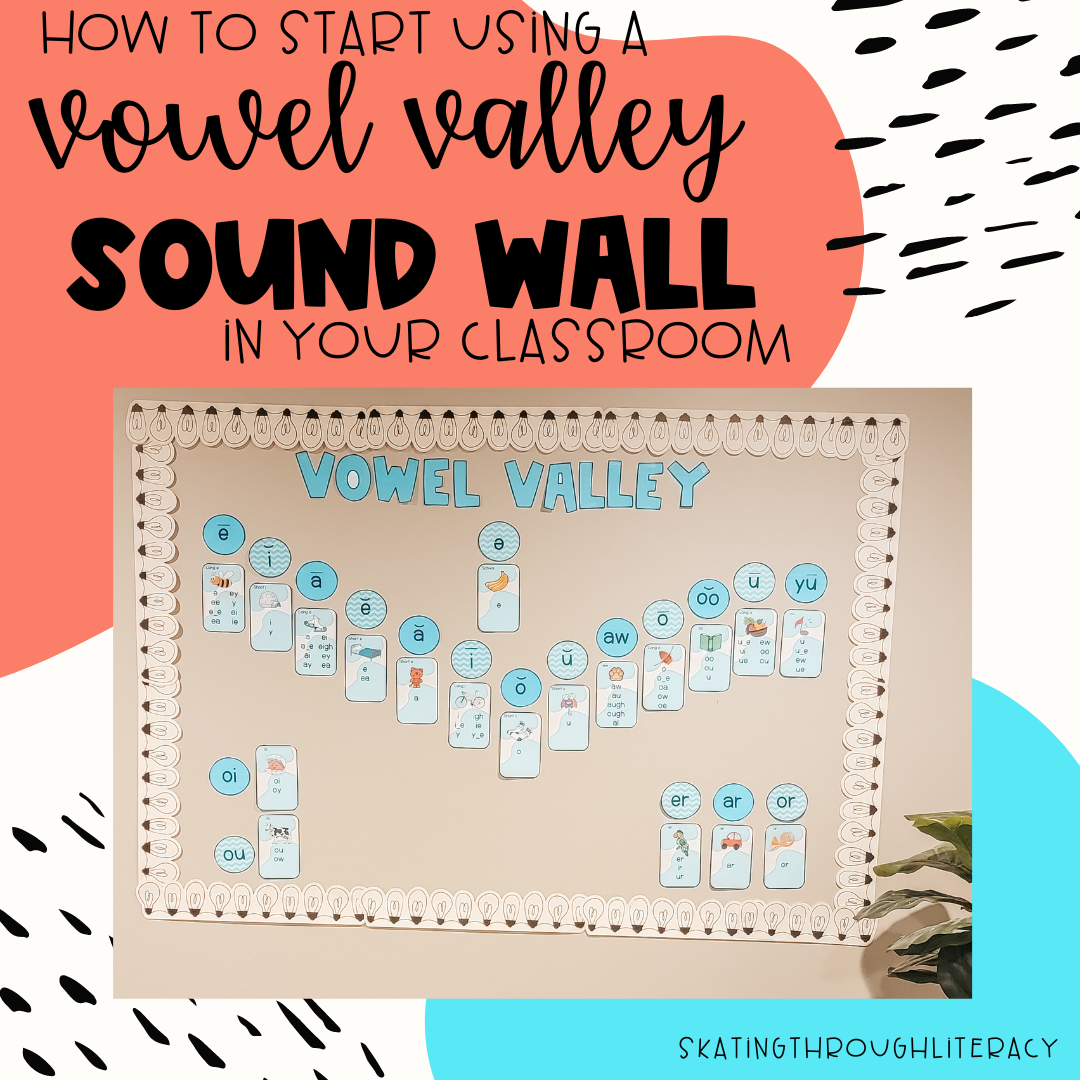The buzz around using a vowel valley sound wall is big lately in education. And with such good reason. But if you haven’t had any formal training or PDs around this concept, looking at a vowel valley sound wall for the first time can be daunting. Not to mention setting it up. I want to help take away some of that fear and share my excitement with you that hopefully will help you be successful.

Raise your hand if you’ve ever had students in your classroom that struggle with decoding? Raise your other hand if you’ve ever had students in your classroom that struggle with spelling? If you’ve taught for any period of time at all, I’m sure both your hands are in the air. So why is this?
Year after year, no matter what I did, there were always students that just didn’t make the progress. My instruction wasn’t reaching them. And I was banging my head against the wall trying to figure out why.
Enter the science of reading in my life.
If you’ve shared in this struggle, you get how frustrating it is to see a student sitting in front of you that you just isn’t making progress. That feeling is what led me into the arms of the science of reading. It completely changed the way I approach teaching reading. It’s now my mission to help others begin to tackle this frustration and truly learn real strategies that can help students make real progress forward. Consequently this passion led me to create a FREE workbook to help you get started: 7 Ways to Revamp your Phonics Instruction Starting Tomorrow.
What is a sound wall? And what about my word wall?
So let’s get to it… What is a sound wall? For the past 8 years of my career I’ve had a word wall in my room. With no real reason or purpose other than someone from the higher up powers said we should have a word wall. I forgot about my word wall. Didn’t update it for weeks at a time. Scrambled to get words up that I taught a month ago but never added. Students didn’t seem to be using it all that much. And this all left me wondering, why am I doing this?
A word wall that we are all familiar with, and perhaps you even have in your classroom right now, is organized by the first letter of the word. Underneath the letter “e” you might have egg, eight, elephant, ear, and echo. Well how confusing for a student trying to figure out which letters represent which sounds. All of these examples, the e makes different sounds. In contrast, a sound wall is organized by the sounds made by the vowels. Spellings under each sound vary, as there are many ways in the English language to spell the different sounds we hear. This difference allows students to focus on the different graphemes that can represent the sounds we hear in words. It gives them strategies for attacking unknown words as well as strategies for spelling new words when they write.

This article from Heggerty goes way more in depth about the sound wall vs word wall. If you are unfamiliar with Heggerty, they are my number one go to resource in the classroom. I highly suggest you spend some time on their site gaining all the knowledge!
Why Vowel Valley?
Vowel valley is organized by the shape the mouth makes when the vowel sound is articulated and where the sound is produced. If you are brand new to looking at a vowel valley, I highly suggest you grab a mirror, for example, and watch your mouth as you make the vowel sounds. As you watch your mouth, say the sounds in the order they appear in vowel valley. You should notice, the vowel sounds are arranged by the position of articulation in the mouth. They go from front to back in the vocal cavity and high to low in tongue position.
This understanding of the sounds vowels make is much more accurate and empowering to developing readers than using terms like long and short vowel sounds. In the overall picture, using terms like long and short vowel sounds does not accurately explain to students the sounds they are hearing.
Let’s set up a Vowel Valley Sound Wall
Vowel valley begins with the long e sound which is formed with the lips in what appears to be a smiling position. This is a high front vowel because the sound is coming from the front of the mouth and the tongue is high on the roof of the mouth. For each vowel sounds that follows long e, the tongue drops and the mouth becomes more wide. This continues until you reach open, low middle short o.
As you proceed back up the other side of vowel valley, you will notice the next sounds are considered to be rounded and back. This means that your tongue will move to the back of the mouth. Also, the sound comes from further back in your throat. This time, the opposite happens with the shape of your mouth. With each vowel sound produced moving up the valley, your mouth becomes more closed.
You’ll notice the schwa just hanging out in the middle. That’s because it is considered an empty vowel. This means it is a neutral sound and it only happens in non- accented syllables. Schwa can be spelled many different ways.

Also not in the valley are your two vowel diphthongs. This is because they are a phoneme that is made by gliding the middle and your mouth position changes as you make the sound, even though it is only one sound. Try both of those sounds while watching your lips in the mirror!
Finally, the set of graphemes not on the valley directly are your r controlled vowel sounds because the r changes the sound of the vowel it makes.
If you want to take the guess work out of setting up your vowel valley sound wall, you can get the sound wall I use in my classroom in my TpT store. I provide you with the headings, word cards, and grapheme or pairs in a few color options to fit your classroom needs.
Options for adding onto your Sound Wall
How you decide to add onto your sound wall throughout your year is up to your personal preference, much like decorating your walls at the beginning of the year. Some teachers want it all set up and complete before students get there. Others like to add onto their walls with students there. I personally find much more benefit in adding with the students as we learn. Most importantly, this involves them in the learning process and increases their likelihood of using the walls as reference. But you do you!
You can simply set up the headers at the beginning of the year, leaving everything else blank. As you study new sounds and new ways to spell that sound, you can add those spellings under each header. You also could begin the year with sound cards up with all the spelling options on one card. Then you can add real life examples or word cards to the wall as each pattern is introduced.
Vowel valley sound wall for students
Another must for me is ensuring that the learning is in the hands of the students. While the sound wall is up in the classroom for immediate reference, I also want each student to have their own personal wall. Students keep their own vowel valley sound wall in their reading boxes all year. Students add on to these walls as they master each new spelling pattern. It also allows me to add words to their sound walls in any teaching moment whether it be a reading conference, writing conference, or during small groups. It provides that differentiation for your students no matter where they enter your classroom. Student A sitting on the rug might have ‘at’ under his short a and student B might have ‘apparatus.’ Both students mastering the same sound, using words at their current developmental level.

Need Additional Practice with Vowel Sounds?
For many of our students, explicit whole group instruction often isn’t enough to truly master a sound taught. Identifying who these students are and providing them with additional support is key in helping them develop into successful readers and spellers. One of the best explicit strategies for helping students master these vowel sounds is using phoneme grapheme mapping. If you want to know more about this strategy, I have an entire post about how to use this with your students. This is an excellent way to enhance your introduction and mastery of the vowel valley. Also, I have free phoneme grapheme mapping boards for you that you can download and get started with right away.
For independent practice or homework at home, I also have students work on digital word work. This accompanies the vowel sound we are practicing in class. The interactive digital slides are a great resource for students to demonstrate what they have learned. I have many different vowel sounds you can check out here.
That was a lot of information! But with knowledge comes power. And hopefully you are feeling a little more empowered to set up a vowel valley in your classroom!






2 Responses
Thank you for sharing the information. I’m excited to start my sound wall with my students.
You’re welcome! I’m glad you found it helpful! Let me know if you have any questions while you are implementing! <3